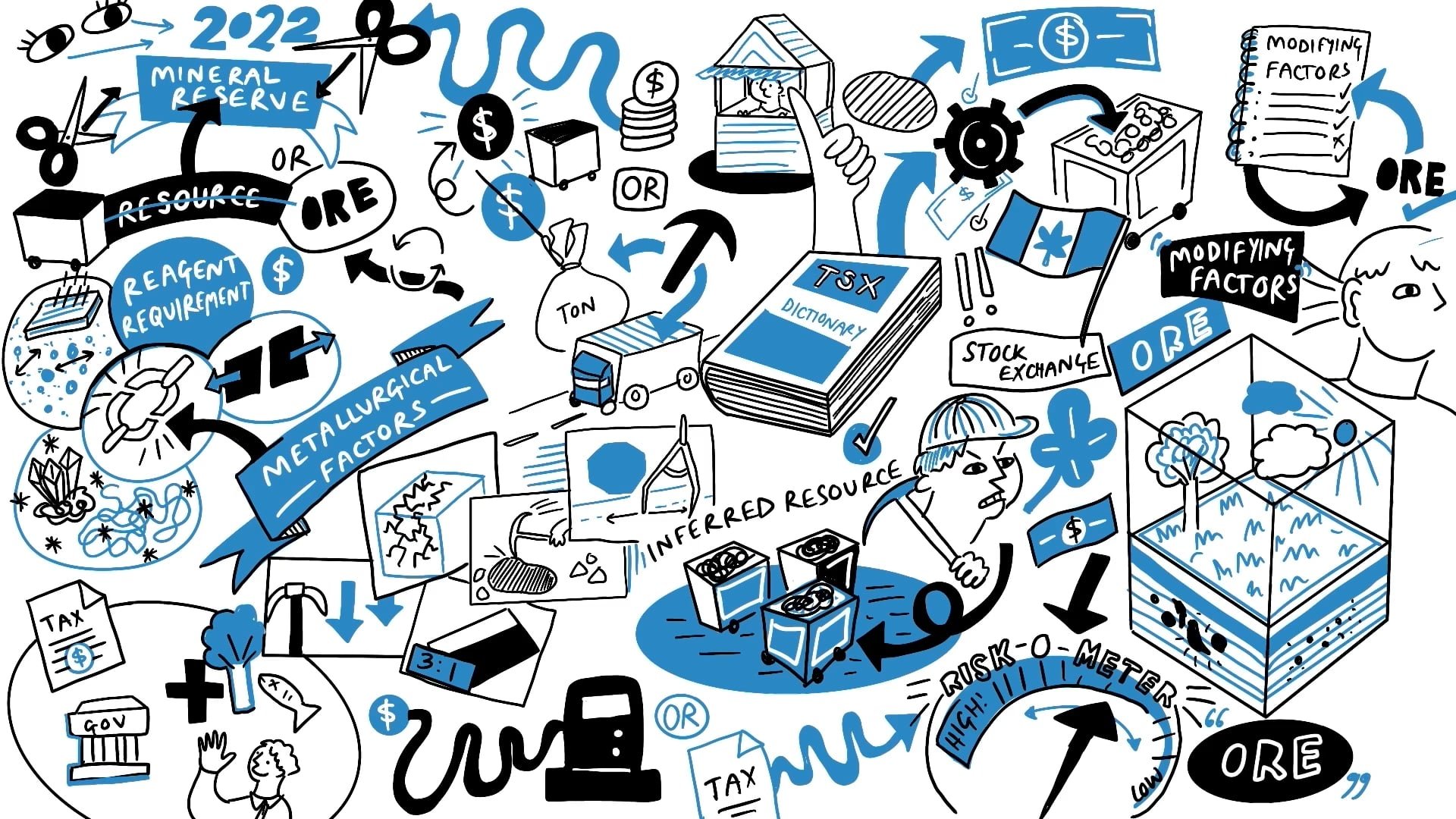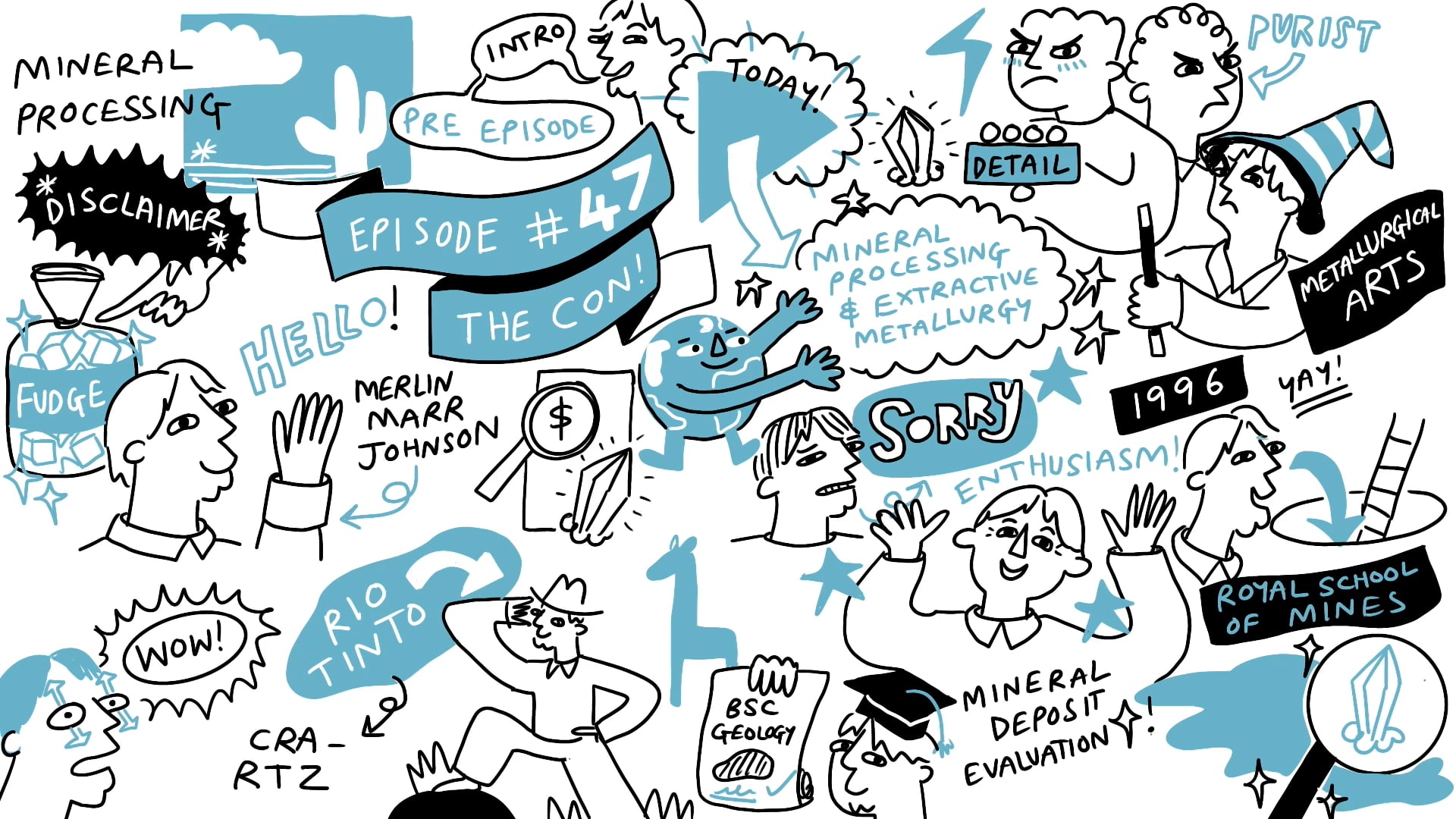Mining: Alluvial mining & In-situ recovery
.jpg)
More episodes
Transcript
Alluvial mining
So I've made some general observations. But what I haven't really spoken about is the other kinds of mining. I think it's worth just touching on alluvial mining. Remember that an alluvial deposit is somewhere where the mineral processing has been carried out by weathering. The concentration has been done by nature and therefore what you've got is an opportunity for very low cost mining because you've got essentially an unconsolidated, massive material which is enriched in the mineral that you're looking for. And these are alluvial mines yes, they have been done commercially over the past. De beers famously did a lot of alluvial mining off the coast of Namibia for Diamonds, and some mining cooperatives have been processing gravels and placer deposits and alluvial. But essentially, this is the preserve of private companies and family businesses and artisanals. I should note, however, that the artisanal deposits in around the last 8 or 9 years before went into hard rock mining and it was a very similar story on the main kind of Gold fields globally apart from in Russia with huge river systems, and they're still being mined on an illegal basis. And so you've got dredging, it's a low cost route for mining.
It's particularly relevant for some smaller minerals and indeed for Gold. So if you look at Tin or Cobalt or Coltan, Columbite Tantalite, and indeed Gold, there's a huge alluvial mining swing factor that's very price responsive. For example, Tin probably got 47% of the production between 40 and 50% of the production comes from alluvial mining in Indonesia, in Myanmar Burma, in the Congo, in Nigeria, in Bolivia, you know a lot of the Tin is mined by small scale cooperatives by family groups, by indentured labour, by artisanal. These words for the private individual that goes out to make money or to make money by panning for Gold or Tin. In Indonesia, for example, you can have wash plants, where the actual grades of Cassiterite in the material is very, very low. You can have it down to kind of 0.05% grade 0.03% actual Tin but because it's been winnowed and separated by nature, all you've got to do is just get some volume of material through here, and you slice it through and you've recovered, because density differentials, we'll come on to this in mineral processing in the next version of the con. But essentially, you can get important swing supply of these producers, because the mining has been already done by mother nature. And what this actually means is that when the prices spike the production globally, is very price responsive. For example, Congolese miners, given just the geological abundance of where they live, they can wake up in the morning, they can look at their mobile phone, they've all got mobile phones, and they can see what the metal prices are doing that day. And depending on whether the Gold price or the Tin price, or the Cobalt price is running, they can choose where they're going to mine that day. And if you speak to any of them about price arbitrage and trading of metal said look at you completely blankly, but if you ask them where they're going to go mining that day, they will tell you, absolutely, they can get $2.5/day from that hill over there and they can get $3 a day from that hill over there and they're going to get to that hill. So it’s hugely relevant for Tin and Cobalt, Coltan and Gold. For example, in West Africa, because of the Islamic insurgency and the destabilisation of West Africa what you've actually got is 10s of 1000s of people going peros panning for Gold and mining in artisanal mines. And this is a $4Bn/annum business, which is funding this call it or they call it Jihad of gangsterism in West Africa is $4Bn a year it's a lot of Gold.
Sudan, for example, it's sometimes the second highest Gold producer in Africa, and yet it hasn't got a single modern Goldmine. These are people that don't have to pay taxes, they don't have to pay rehabilitation for safety or the training or community social relations, they don't have to pay for licences. They go out there and they just mine it. It means that the cost curve for something like Tin is stacked in the favour of the artisanals. But it also means that if you're looking to buy products that got kind of good provenance that you know, is got environmental safeguards associated with it and good working standards around it, you're going to have to pay more to make sure that it comes from a hard rock mine, where you know that it's being done properly by a responsible mining company.
In-situ recovery
There is, of course, another type of mining that I haven't really spoken about. And that's an in-situ recovery. It's famously done for Uranium; it works extremely well in Kazakhstan and in the US. This is a kind of mining, which is not really mining, it's more kind of mineral processing, and it's related to fluid flow, porosity, permeability, rock chemistry, and your injection fluid chemistry. It's a very specific operation, the flow dynamics are absolutely crucial. The chemistry and the flow rates are absolutely crucial. It's very, very specialised, probably works best. I know, it's being applied occasionally on some Copper mines in the US, but it's a whole different kettle of fish. It's not that relevant in terms of understanding how mining works as a whole unless, of course, from the Uranium space, I think it's much more important to get your head around the fact that underground mining is fundamentally related to scale and productivity costs range from $20 to $200/t of operating.










































.jpg)
.jpg)
.jpg)















